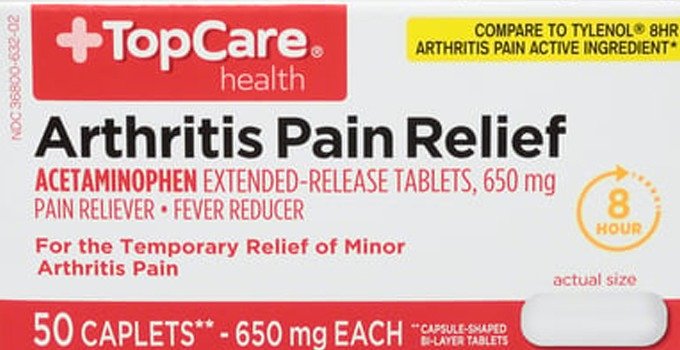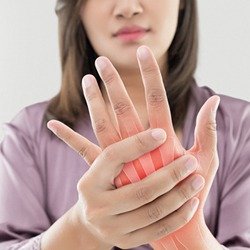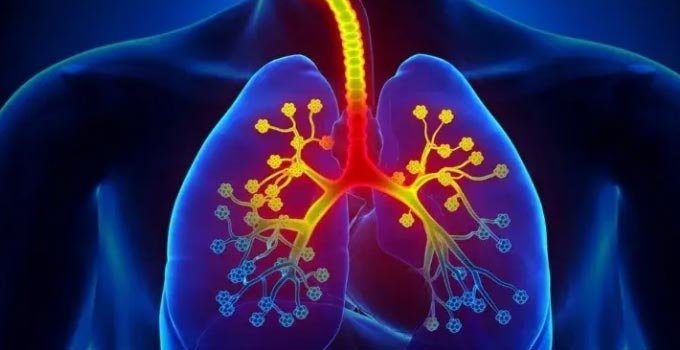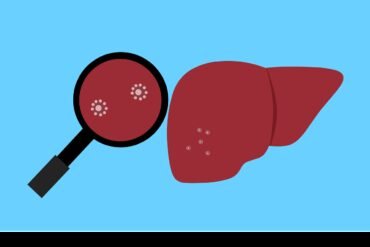Arthritis Pain Relief: Strategies and Treatment Options

Table of Contents
Understanding Arthritis Pain: Causes and Symptoms
Arthritis is a common condition that affects millions of people worldwide. It is characterized by inflammation and stiffness in the joints, causing pain and discomfort. Understanding the causes and symptoms of arthritis pain is crucial for effective management and treatment. Here are some key points to consider:
- Causes of Arthritis Pain:
Arthritis pain can be caused by various factors, including:
- Age: As we age, the risk of developing arthritis increases.
- Genetics: Certain genetic factors can make individuals more susceptible to arthritis.
- Joint injuries: Previous injuries to the joints can lead to arthritis later in life.
- Autoimmune disorders: Conditions like rheumatoid arthritis result from an overactive immune system attacking the joints.
- Obesity: Excess weight puts additional stress on the joints, increasing the risk of arthritis.
nbsp;
- Symptoms of Arthritis Pain:
The symptoms of arthritis pain can vary depending on the type of arthritis, but common signs include:
- Joint pain and stiffness
- Swelling and inflammation
- Decreased range of motion
- Fatigue and weakness
- Tenderness and warmth in the affected area
It’s important to note that arthritis pain can be chronic, meaning it persists for a long time, or it can come and go in flare-ups. The severity of the pain can also vary from mild to debilitating.
If you experience any of these symptoms, it is advisable to consult a healthcare professional for an accurate diagnosis and appropriate treatment plan. Early intervention can help manage pain and prevent further joint damage.
Lifestyle Changes for Arthritis Pain Management
When it comes to managing arthritis pain, making certain lifestyle changes can significantly improve your quality of life. Alongside medical treatments, incorporating these strategies into your daily routine can provide effective relief from arthritis pain.
- Exercise regularly: Engaging in low-impact exercises, such as swimming, cycling, or walking, can help strengthen the muscles around your joints and reduce pain. Consult with a physical therapist to develop a suitable exercise plan tailored to your specific condition.
- Maintain a healthy weight: Carrying excess weight puts extra strain on your joints, leading to increased arthritis pain. By maintaining a healthy weight, you can alleviate pressure on your joints and experience less discomfort.
- Try hot and cold therapy: Applying heat or cold to affected joints can help reduce inflammation and ease pain. Experiment with heat packs, warm baths, or ice packs to find out which method works best for you.
- Practice relaxation techniques: Stress can exacerbate arthritis pain, so learning relaxation techniques, such as deep breathing exercises or meditation, can help reduce both stress levels and pain intensity.
- Get enough sleep: Prioritizing a good night’s sleep is crucial for managing arthritis pain. Establish a consistent sleep schedule and create a comfortable sleep environment to promote better sleep quality.
- Adopt a healthy diet: Consuming a balanced diet rich in fruits, vegetables, whole grains, and lean proteins can help reduce inflammation and provide the necessary nutrients for joint health. Additionally, certain foods like fatty fish, nuts, and olive oil contain omega-3 fatty acids, which have anti-inflammatory properties.
- Use assistive devices: Depending on the severity of your arthritis, using assistive devices, such as braces, splints, or canes, can relieve pressure on your joints and improve mobility.
- Manage your stress: Stress can amplify arthritis pain, so finding effective ways to manage stress is essential. Engage in activities that you enjoy, practice relaxation techniques, and seek support from family, friends, or a support group.
While lifestyle changes can significantly improve arthritis pain management, it is important to consult with your healthcare provider or a rheumatologist to develop a comprehensive treatment plan that suits your specific needs.
Medication and Therapy Options for Arthritis Pain Relief
Arthritis pain can significantly impact a person’s quality of life. Fortunately, there are various medication and therapy options available that can provide relief from arthritis pain. These strategies aim to manage pain, reduce inflammation, and improve joint mobility. It is important to consult with a healthcare professional before starting any new treatment. Here are some common medication and therapy options for arthritis pain relief:
- Nonsteroidal Anti-Inflammatory Drugs (NSAIDs): NSAIDs, such as ibuprofen and naproxen, can help reduce pain and inflammation caused by arthritis. They work by blocking specific enzymes that contribute to inflammation. However, long-term use of NSAIDs may have side effects, so it is essential to follow the recommended dosage and consult a healthcare professional.
- Topical Analgesics: These are creams, gels, or patches that can be applied directly to the affected joints. Topical analgesics provide localized pain relief and can be an alternative for those who cannot tolerate oral medications. Some common ingredients include capsaicin, menthol, and salicylates.
- Disease-Modifying Antirheumatic Drugs (DMARDs): DMARDs are primarily used for inflammatory forms of arthritis, such as rheumatoid arthritis. They work by targeting the immune system to slow down the progression of the disease, reduce pain, and prevent joint damage. Methotrexate and sulfasalazine are examples of DMARDs.
- Biologic Response Modifiers: Biologic medications are a type of DMARD that target specific molecules involved in the immune response. They are usually prescribed for moderate to severe rheumatoid arthritis and can help reduce joint inflammation and prevent joint damage. Examples include adalimumab and etanercept.
- Corticosteroids: Corticosteroids, such as prednisone and cortisone, are potent anti-inflammatory drugs that can provide rapid relief from arthritis pain. They are usually prescribed for short-term use due to their potential side effects when used long-term.
- Physical Therapy: Physical therapy is an essential part of arthritis pain management. A physical therapist can design an exercise program to improve joint strength, flexibility, and range of motion. They may also use techniques like heat and cold therapy, ultrasound, and electrical stimulation to alleviate pain and reduce inflammation.
- Occupational Therapy: Occupational therapists can help individuals with arthritis learn techniques to reduce joint stress during daily activities. They may provide assistive devices, such as splints or braces, to support the affected joints and improve function.
- Acupuncture: Acupuncture involves the insertion of thin needles into specific points on the body to promote pain relief and improve overall well-being. Some studies suggest that acupuncture can be beneficial for arthritis pain management, although more research is needed to confirm its effectiveness.
Remember, every individual’s experience with arthritis pain is unique, and what works for one person may not work for another. It is important to work closely with a healthcare professional to determine the most suitable medication and therapy options for your specific condition. Additionally, lifestyle modifications, such as maintaining a healthy weight, engaging in regular physical activity, and adopting a balanced diet, can also contribute to arthritis pain relief.
Natural Remedies and Alternative Therapies for Arthritis Pain
Arthritis pain can be debilitating and affect your quality of life. While conventional treatments such as medications and physical therapy are effective, many people seek natural remedies and alternative therapies to manage their arthritis pain. Here are some strategies and treatment options that may provide relief:
- Acupuncture: This ancient Chinese therapy involves the insertion of thin needles into specific points on the body. Acupuncture is believed to stimulate the release of endorphins, which act as natural pain relievers. Many people with arthritis find acupuncture helpful in reducing pain and improving joint function.
- Herbal Supplements: Certain herbs and supplements have anti-inflammatory properties that can help reduce arthritis pain. Turmeric, ginger, boswellia, and devil’s claw are some examples of herbs that may provide relief. However, it’s important to consult with a healthcare professional before starting any new supplements, as they may interact with other medications or have potential side effects.
- Hot and Cold Therapy: Applying heat or cold to arthritic joints can help reduce pain and inflammation. Warm compresses or heating pads can relax muscles and improve blood flow, while cold packs or ice packs can numb the area and reduce swelling. Alternate between hot and cold treatments for maximum benefit.
- Massage: Gentle massage can help relax muscles, improve circulation, and reduce arthritis pain. It can also promote the release of endorphins, which act as natural painkillers. Consider getting a professional massage or learn some self-massage techniques to relieve pain at home.
- Exercise and Physical Activity: Regular exercise can help strengthen the muscles around the joints, reduce stiffness, and improve flexibility. Low-impact activities like swimming, cycling, and yoga are gentle on the joints and can provide pain relief. Consult with a physical therapist or an exercise specialist to design a suitable exercise program for your specific needs.
While natural remedies and alternative therapies can be beneficial for arthritis pain relief, it’s essential to remember that they may not work for everyone. It’s always a good idea to consult with a healthcare professional before trying any new treatments, especially if you have underlying medical conditions or are taking medications. They can provide personalized advice and ensure that the chosen remedies are safe and effective for your specific situation.
Surgical Interventions for Severe Arthritis Pain Relief
When non-surgical treatments fail to adequately relieve arthritis pain, surgical interventions may be considered. These procedures aim to reduce pain, improve joint function, and enhance overall quality of life. Here are some surgical options commonly used for severe arthritis pain relief:
- Joint Replacement Surgery: Also known as arthroplasty, joint replacement surgery is a common procedure for severe arthritis. It involves removing the damaged joint and replacing it with an artificial joint made of metal, plastic, or ceramic. Joint replacement surgery is most commonly performed on hips and knees, but it can also be done on shoulders, elbows, and ankles.
- Joint Fusion Surgery: Joint fusion, or arthrodesis, is a surgical procedure that permanently fuses two bones in a joint. It is typically performed on small joints, such as those in the fingers, wrists, and ankles. Joint fusion surgery eliminates the joint movement but can significantly reduce pain and stabilize the joint.
- Joint Resurfacing: This procedure involves removing the damaged cartilage and resurfacing the joint with a smooth material. It is commonly performed on hips and knees and aims to reduce pain and improve joint function without completely replacing the joint.
- Osteotomy: Osteotomy is a surgical procedure that involves cutting and reshaping the bone to relieve pressure on the damaged joint. It is commonly performed on knees and can help realign the joint, reduce pain, and delay the need for joint replacement surgery.
- Arthroscopy: Arthroscopy is a minimally invasive surgical procedure that allows the surgeon to visualize and treat joint problems using small incisions and a camera. It is commonly used to remove loose cartilage or bone fragments that cause pain and inflammation in the joint.
It is important to note that surgical interventions are typically considered when conservative treatments have been exhausted and the pain significantly affects daily activities and quality of life. The decision to undergo surgery should be made in consultation with a healthcare professional, considering factors such as the severity of arthritis, overall health, and individual goals and preferences.
Surgical interventions can provide significant pain relief and improve joint function for individuals with severe arthritis. However, like any surgical procedure, they carry risks and require a period of rehabilitation for optimal outcomes. It is important to have realistic expectations and adhere to post-operative care guidelines to ensure a successful recovery.
Always consult with a healthcare professional to determine the most appropriate treatment options for your specific condition and needs.


























